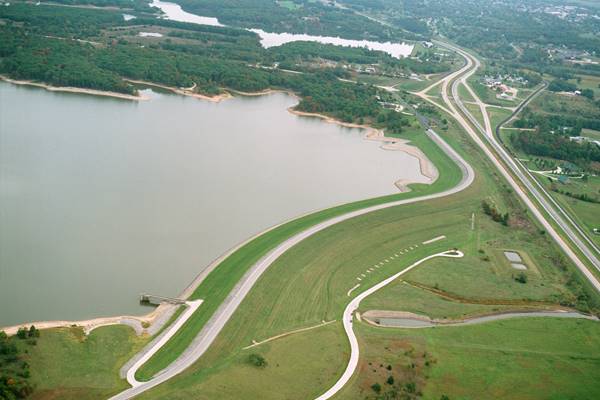Mo. plan to uncap stunted crappie yields hybrid striper fishery instead
An attempt to jumpstart a stunted white crappie fishery on a Missouri reservoir hasn’t panned out, according to a recent study from a state fish biologist. But some anglers are plenty happy with a major side effect of the failed plan: A hybrid striped bass fishery.
Long Branch Lake, a reservoir near Macon, Missouri, supported respectable crappie and largemouth bass populations for a few years after it was first impounded in the late 1970s. But since then, the bass numbers have dropped off and the white crappie have been stunted, rarely growing much beyond 5 to 7 inches.
Biologists suspected the culprit behind the stunted crappie was the lake’s gizzard shad. Fueled by the high load of nutrients coming in off Long Branch Lake’s fertile and farm-dominated watershed, the shad quickly grow too large for crappie to feed on.
“In those situations, shad tend to grow pretty rapidly during their first year or two,” said Paul Michaletz, a resource scientist with the state’s Department of Conservation. “They really outgrow their vulnerability to predation by a lot of sport fish.”
The department began stocking a hybrid of striper and white bass in Long Branch Lake in 2005 in hopes the predators would take a significant bite out of the adult shad population. The thinking went that the fewer remaining shad would produce more offspring, which would grow more slowly in the face of greater competition. With more small shad around, the crappie might be able to eat their way out of their stunted phase.
According to a recent study authored by Michaletz and published in the Journal of Freshwater Ecology, the plan only made it halfway to its goal. Surveys showed that the number of young shad did increase, the crappie aren’t growing any larger.
“The last year of the study, the anglers claimed they caught more large crappie, but I can’t prove based on the results we saw,” Michaletz said.
While the hybrid stripers didn’t do the job of uncapping crappie growth, they appear to be doing a fine job of giving anglers on Long Branch lake something to fish for. Chad Smith, a wildlife resource biologist with the conservation department who grew up in the area, says he had all but given up on largemouth fishing on the lake before he and his friends realized how fun the striper fishing was.
“A 6-pound largemouth is a fight, but nothing like a 6-pound striper,” Smith said. “As soon as they’re hooked, they’re on the run.”

Impounded in the late ‘70s, Long Branch Lake’s crappie and bass fisheries quickly fell on hard times. (Credit: U.S. Army Corps of Engineers)
And they’re abundant and easy to pattern, Smith said. The hybrids ball up shad and crash them on the surface, making it easy to key in on where they’re actively feeding. The technique can be as simple as casting a 3/4-ounce shad Rat-L-Trap into an area of aggressively feeding hybrids and letting it fall. That’s assuming that the reel on the other end of the line can handle the run.
“You’ve gotta have some pretty decent equipment — high speed reels and stuff that’s built to last,” Smith said. “They can rip the gears out of a cheaper reel pretty easy.”
As far as the crappie fishing on Long Branch Lake goes, it’s going to be a difficult fishery to turn around. It would likely take a reduction in the nutrients flowing into the lake, but that could be tough given the naturally fertile soil in the watershed and the amount of nutrients already in the reservoir.
“Sometimes you’ve got to work with what you have,” he said. “In this case, we’re continuing to stock hybrid striped bass.”


0 comments